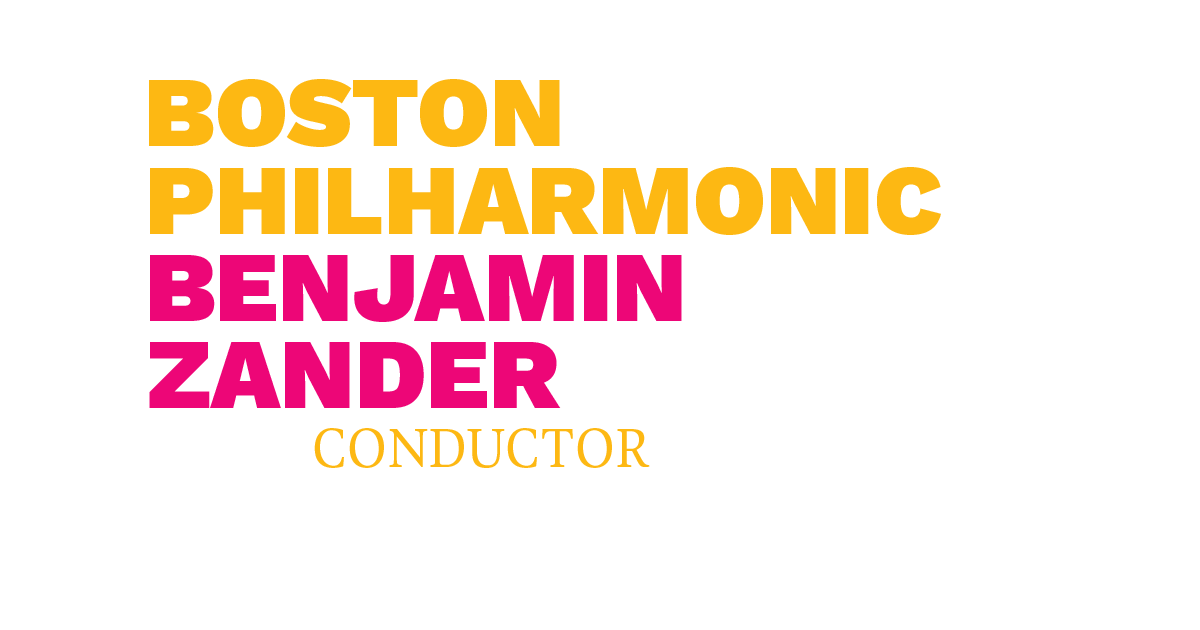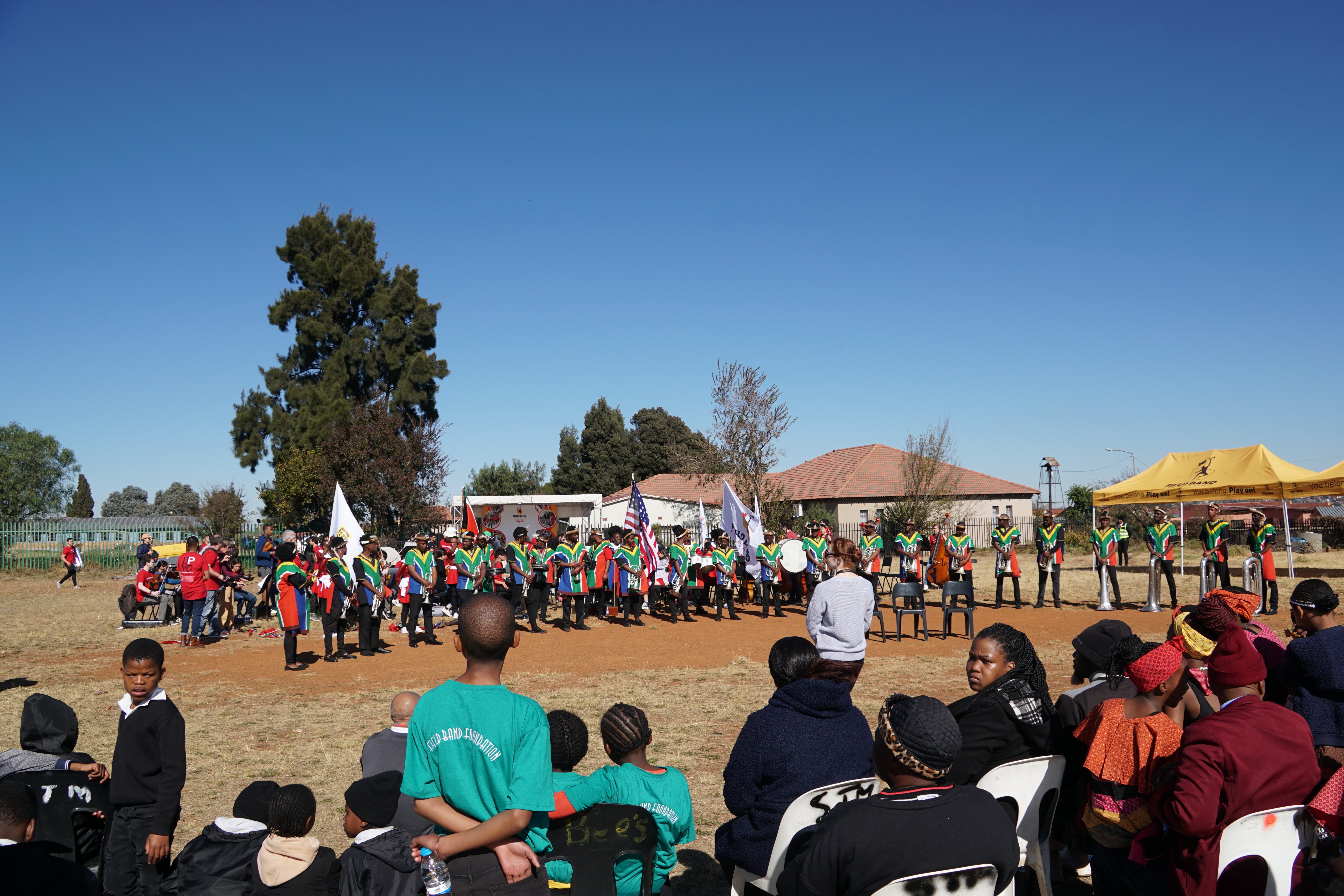 The Field Band Foundation’s welcome for the BPYO on Friday.
The Field Band Foundation’s welcome for the BPYO on Friday.
You never quite know what’s going to happen when the BPYO plays Tchaikovsky. Four years ago, in Brazil, the orchestra did a reading with a local youth orchestra of the Romeo and Juliet Fantasy Overture.
The setting was the courtyard of a school in the middle of a favela in Salvador (in the event, the instrumentation swelled to proportions Berlioz might have adored: a dozen horns, fifteen bassoons, ten flutes – or thereabout). That was the most magnificently incongruous marriage of music and performance space I’d ever experienced.
Until Friday, that is, when the orchestra brought the finale of Tchaikovsky’s Fifth Symphony to the courtyard of another school, this one in the Kagiso township in Krugersdorp, South Africa. As interpretations go, it wasn’t quite one for the ages: asking 112 musicians to listen and hear each other across a sunny, windswept field is a tall order. But that wasn’t really the point. Sharing this music with a big, appreciative audience of local schoolkids and their families was and they received it enthusiastically.

Dancers performing during the BPYO’s exchange with FBF on Friday.
In fact, all of Friday, our first day out of Pretoria, was one of excitement. It began with the BPYO marching in a parade celebrating World Youth Day, a date which has a special significance in South Africa: it was here, on 16 June 1976, that students rose up in opposition to apartheid policies in the nearby township of Soweto. Accordingly, it’s a big holiday in these parts.
The parade was a short but spirited event full of impassioned singing, lively dancing, and terrific drumming. It basically took us around the block to the entrance of the Setlolamathe Public School, where the BPYO then engaged in the tour’s first true musical exchange with a local consortium called Field Band Foundation.
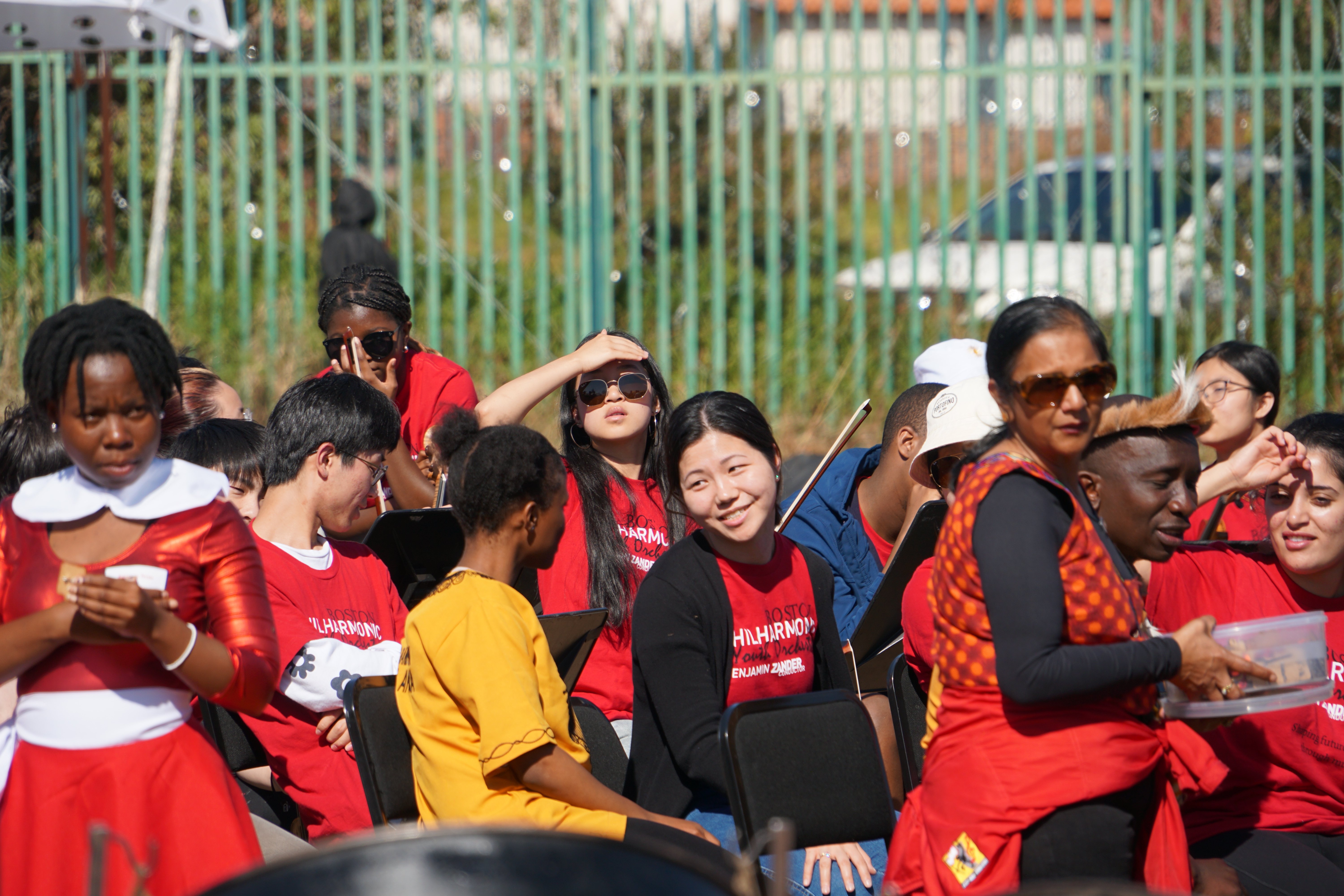 BPYO and Field Band Foundation members during Friday’s side-by-side.
BPYO and Field Band Foundation members during Friday’s side-by-side.
Over the course of a couple hours, the orchestra played Tchaikovsky, members of FBF serenaded us with a set of traditional South African songs and dances (plus arrangements of “Tomorrow” from Annie and Europe’s “The Final Countdown”), a BPYO brass ensemble offered selections of their own, and everybody joined together for a finale of The Stars and Stripes Forever.
Amid the music-making also came a good bit of time – though not nearly enough – to get to know some of our hosts. Then it was off to lunch, a new hotel in Johannesburg, and a Mahler rehearsal followed by a very late dinner.
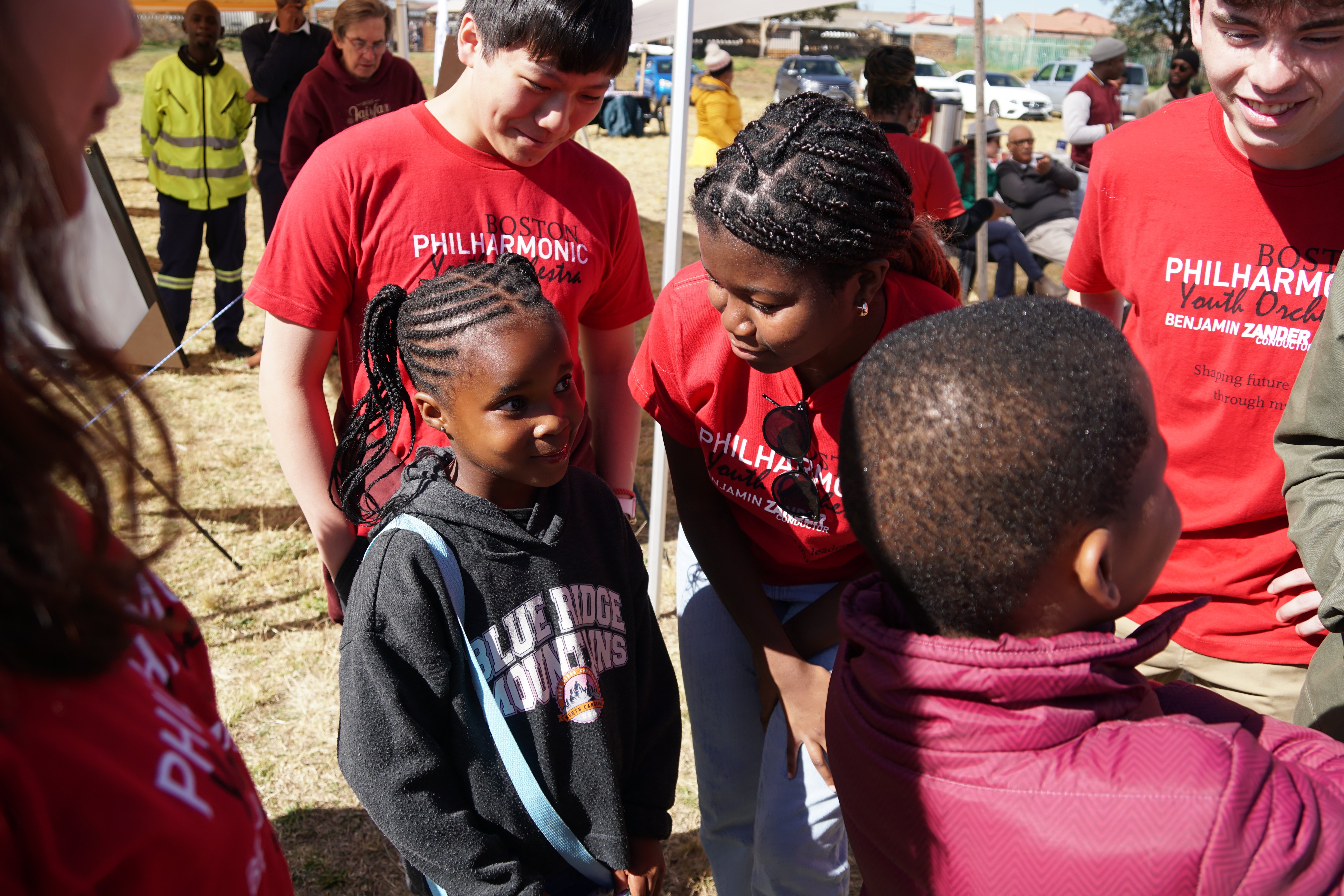 BPYO musicians mingling with local students at the Field Band Foundation exchange.
BPYO musicians mingling with local students at the Field Band Foundation exchange.
Saturday brought us into Soweto proper for the full day. This is the largest Black township in South Africa and one of the biggest suburbs of Johannesburg. It is a city in which poverty and want run rampant, the crime rate and unemployment are high, and infrastructure is poor.
At the same time, it’s a place of immense international significance and local pride. Nelson Mandela and Desmond Tutu both lived here (on the same block, no less: Vilakazi Street, one of our tour guides pointed out, is the only road in the world on which two Nobel Peace Prize winners once resided). And it was here that the protests and revolt that led, eventually, to the end of apartheid began.
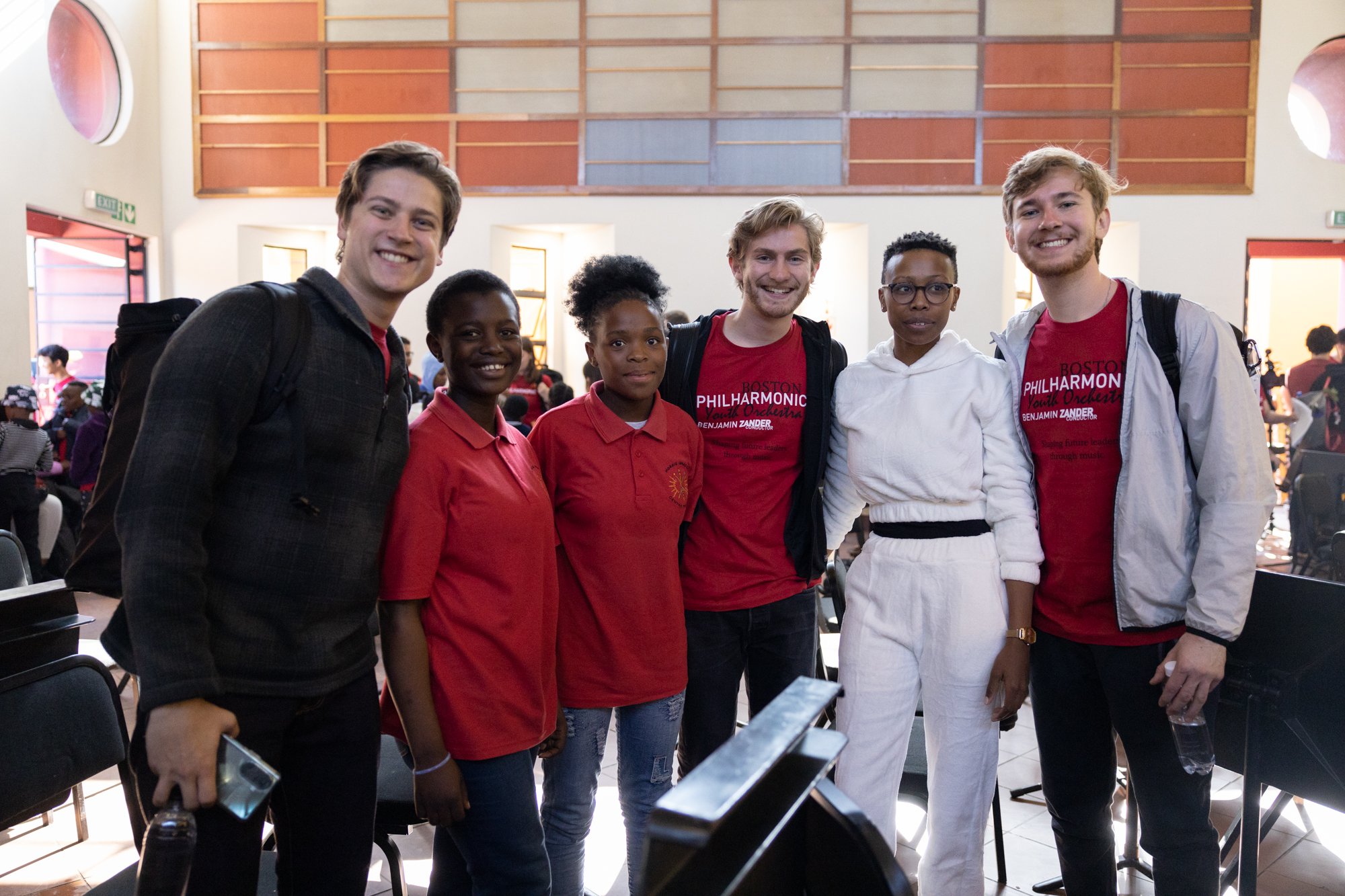 BPYO members Tristen Broadfoot (r), Max Reed (c), and Cole Turkel (r) with students from the Morris Isaacson Music Center in Soweto.
BPYO members Tristen Broadfoot (r), Max Reed (c), and Cole Turkel (r) with students from the Morris Isaacson Music Center in Soweto.
In the morning, we visited the Morris Isaacson Center of Music for the tour’s second exchange. Like the first, it went swimmingly: Tchaikovsky from BPYO; some popular tunes and South African pieces played side-by-side; and, in the end, not enough time to simply hang out with the kids and families who packed the venue.

BPYO percussionist Gerson De La Rosa with a local six-year-old drumming phenom.
A repast on Vilakazi Street (where we were entertained by some of the most capable street performers I’ve ever seen) followed and then there was a rehearsal at Soweto’s Regina Mundi church.
This venue is in many ways the beating moral heart of not just Soweto but of South Africa itself. Sometimes called the People’s Church, Regina Mundi was pivotal in the years-long struggle against apartheid: among other things, this was the spot where leaders of the oppositional movement met (in secret, since political meetings were banned) and where protesters caught up in the riots in 1976 fled for refuge. The space still bears the scars of those years: bullet holes in the ceiling and a smashed altar most dramatic among them.
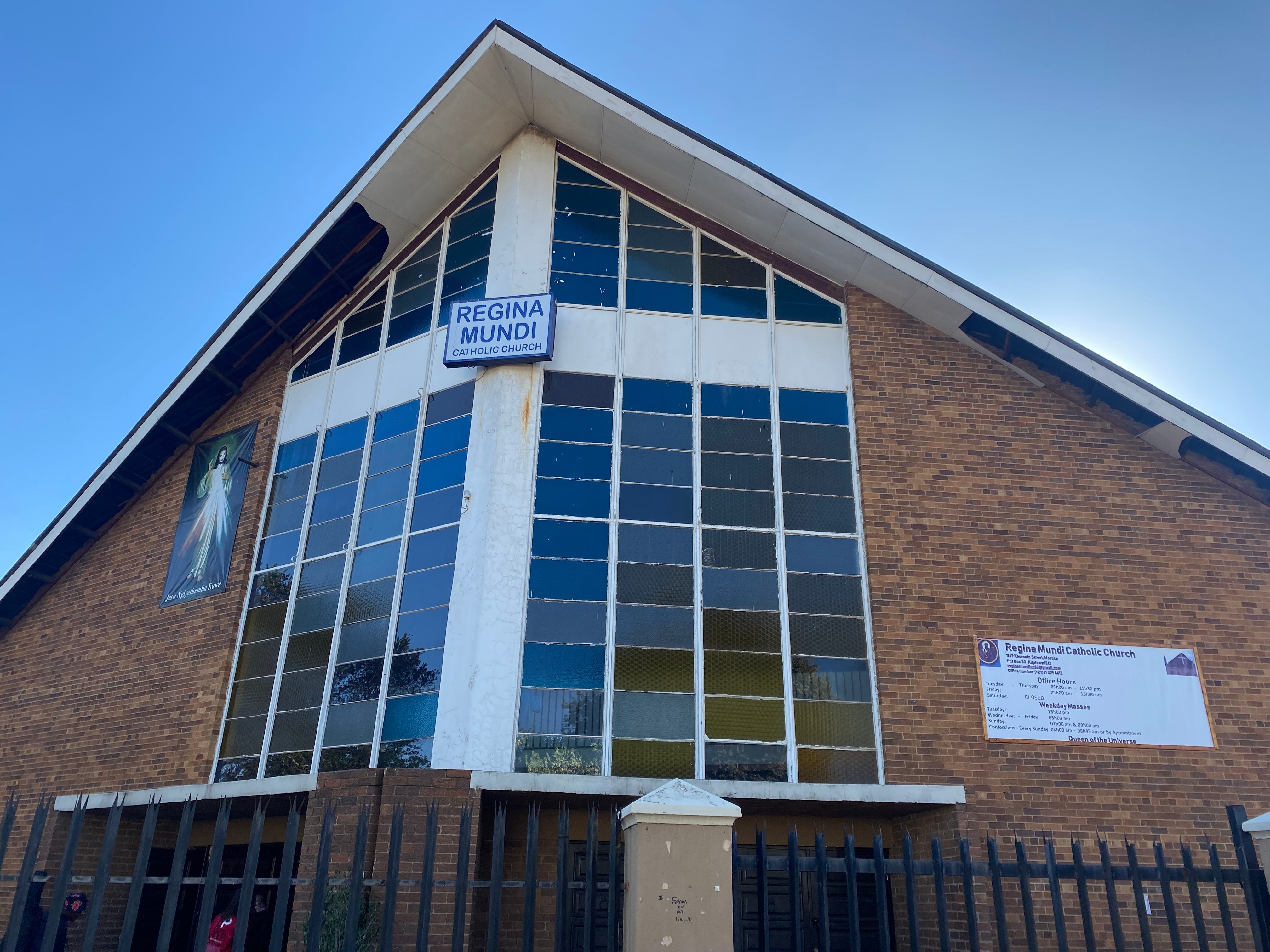 Regina Mundi Roman Catholic Church in the heart of Soweto, South Africa.
Regina Mundi Roman Catholic Church in the heart of Soweto, South Africa.
So, on some level, it’s hard to imagine a more fitting location in which to be performing Mahler’s Symphony No. 2. At the same time, Mahler Two is an enormous, complex, and long piece. Counting on an audience that’s probably largely unfamiliar with the composer, his style, and his syntax (not to mention classical music, generally) to come and sit through the whole effort is a big ask.
And yet, come Saturday night, the floor was sold out. Several families and students we’d met over the last couple of days were there, as was a party from Johannesburg’s Jewish community (which included the Israeli ambassador to South Africa). But most of the crowd seemed to be made up of locals from Soweto.
It’s always a question of how many of the specifics of Mahler’s message in the piece – which deals, like so much of his music does, with loss, pain, struggle, and, ultimately, overcoming it all – get through as the composer might have intended. That doesn’t always happen with Western audiences familiar with his work..
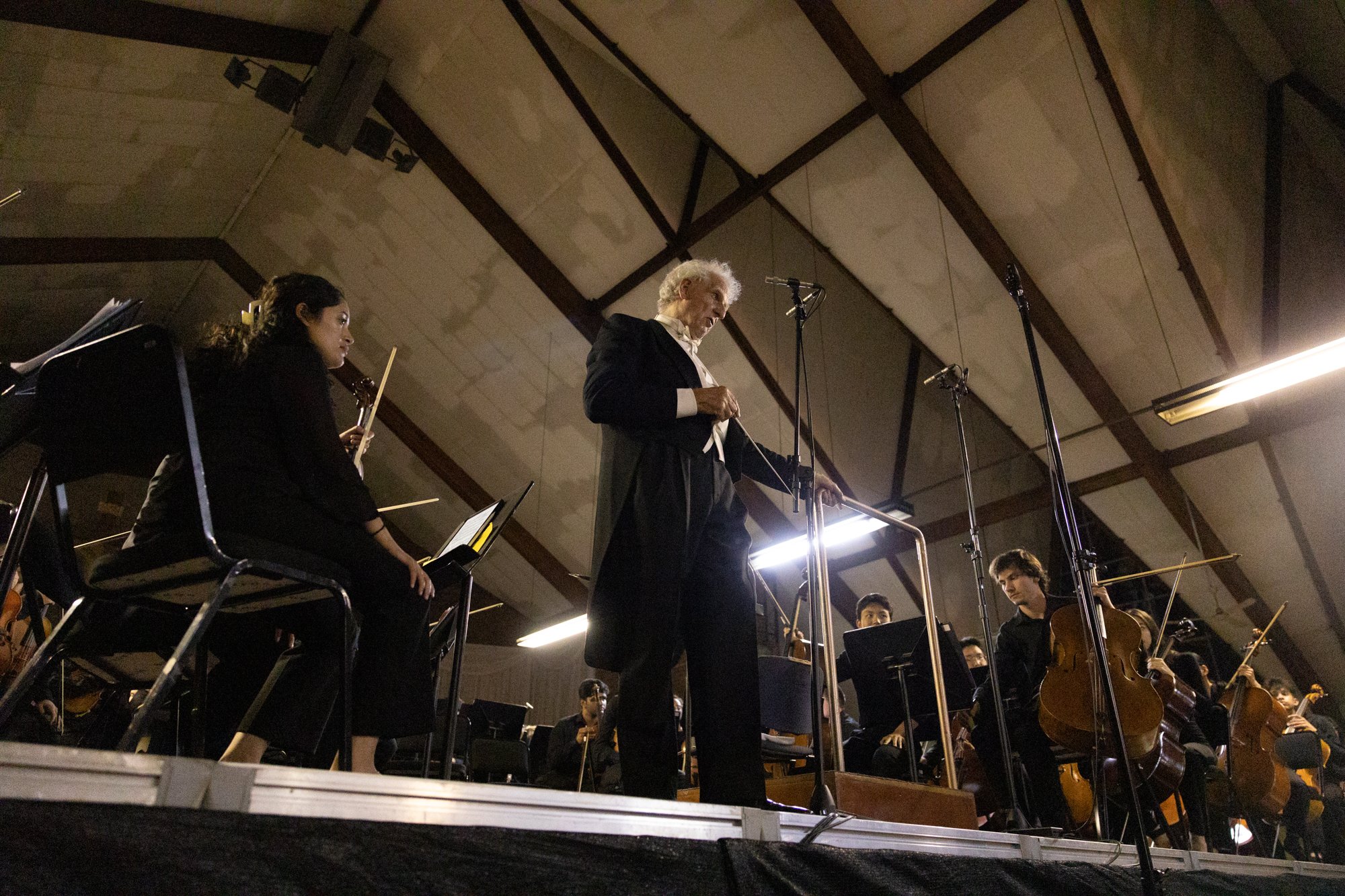
BPYO music director Benjamin Zander introducing Mahler’s Symphony No. 2 before Saturday’s performance in Soweto.
But not every house has Benjamin Zander on hand to introduce the piece. He did that on Saturday with a clarity and comprehensiveness that, even for him and his legacy of guides to Mahler’s music, was conspicuously impressive; one concertgoer later told him it was the best overview of the symphony she’d ever heard. What’s more, it seemed to really bring the crowd into the music.
Accordingly, their response to the whole undertaking brimmed with appreciation. Throughout the night, they sat and listened intently. Lots of folks videoed the orchestra in action. And sometimes they let loose with applause at the most wonderfully inopportune – yet entirely appropriate – moments, like the furious apex of the first movement and the choral apogee of the finale.
The last was extra fitting given that the electricity in Regina Mundi had cut out about five minutes before the end of the symphony and the church was plunged into darkness. The question on everybody’s mind was what would happen. Would the choir stop singing? Would the orchestra get lost?
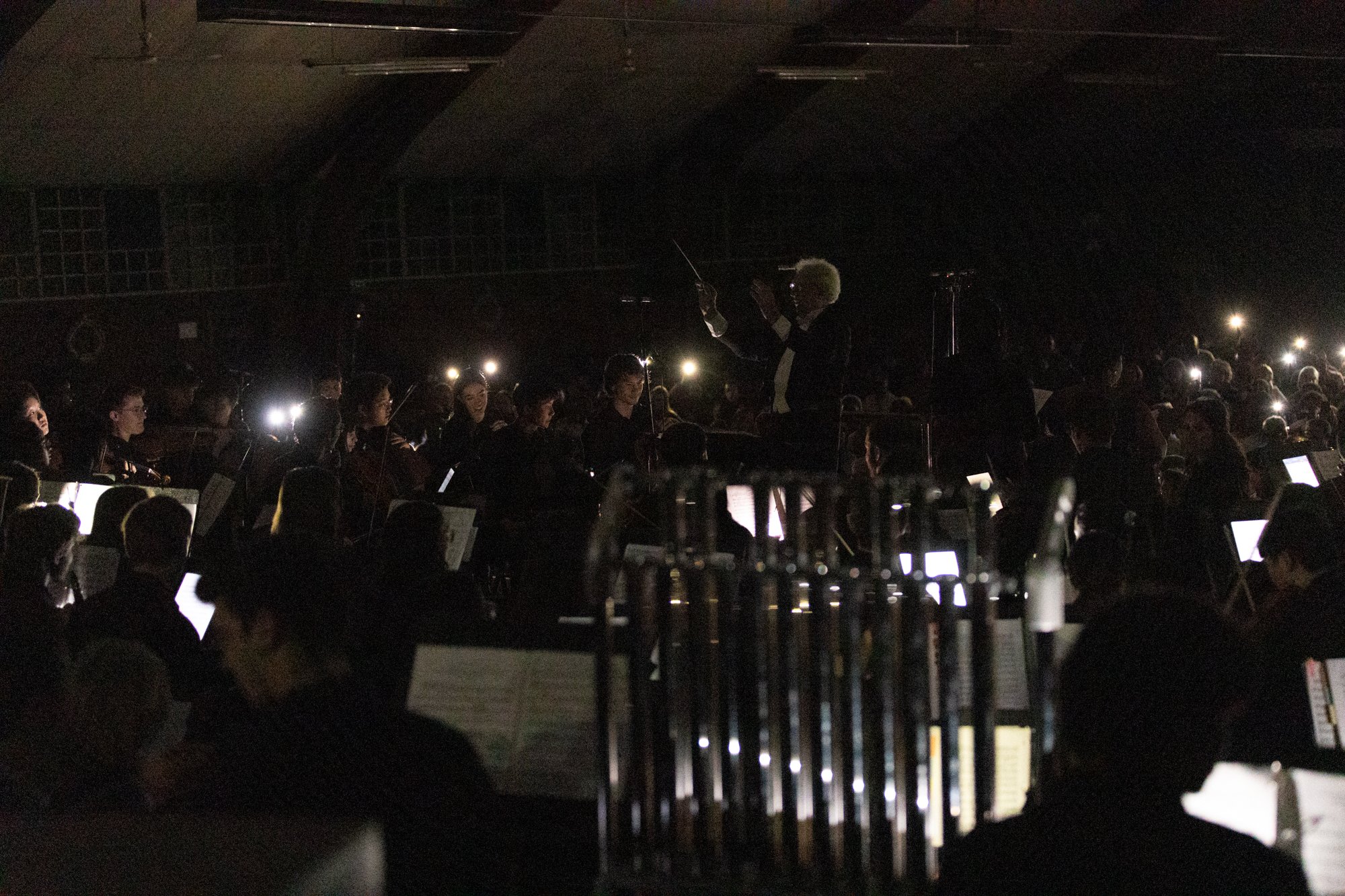 Mahler by iPhone.
Mahler by iPhone.
Actually, they all kept going, some by memory, some by the glow of iPads or iPhone flashlights. Not one person seemed fazed by the turn of events (in fact, the orchestra’s seating rearranged itself in the blink of an eye: instead of two players to a stand, there were suddenly, in some sections, four or five).
I have never imagined Mahler’s conception of redemption and regeneration illustrated this way (the lights came back on just before the orchestra reached the double-bar; frankly, the whole incident could hardly have been choreographed better had that been the intent). I’ve certainly never heard it played under such circumstances. And yet, this night’s was probably as cathartic, triumphant, and utterly thrilling an account of the Resurrection Symphony as any of us are likely to ever experience.
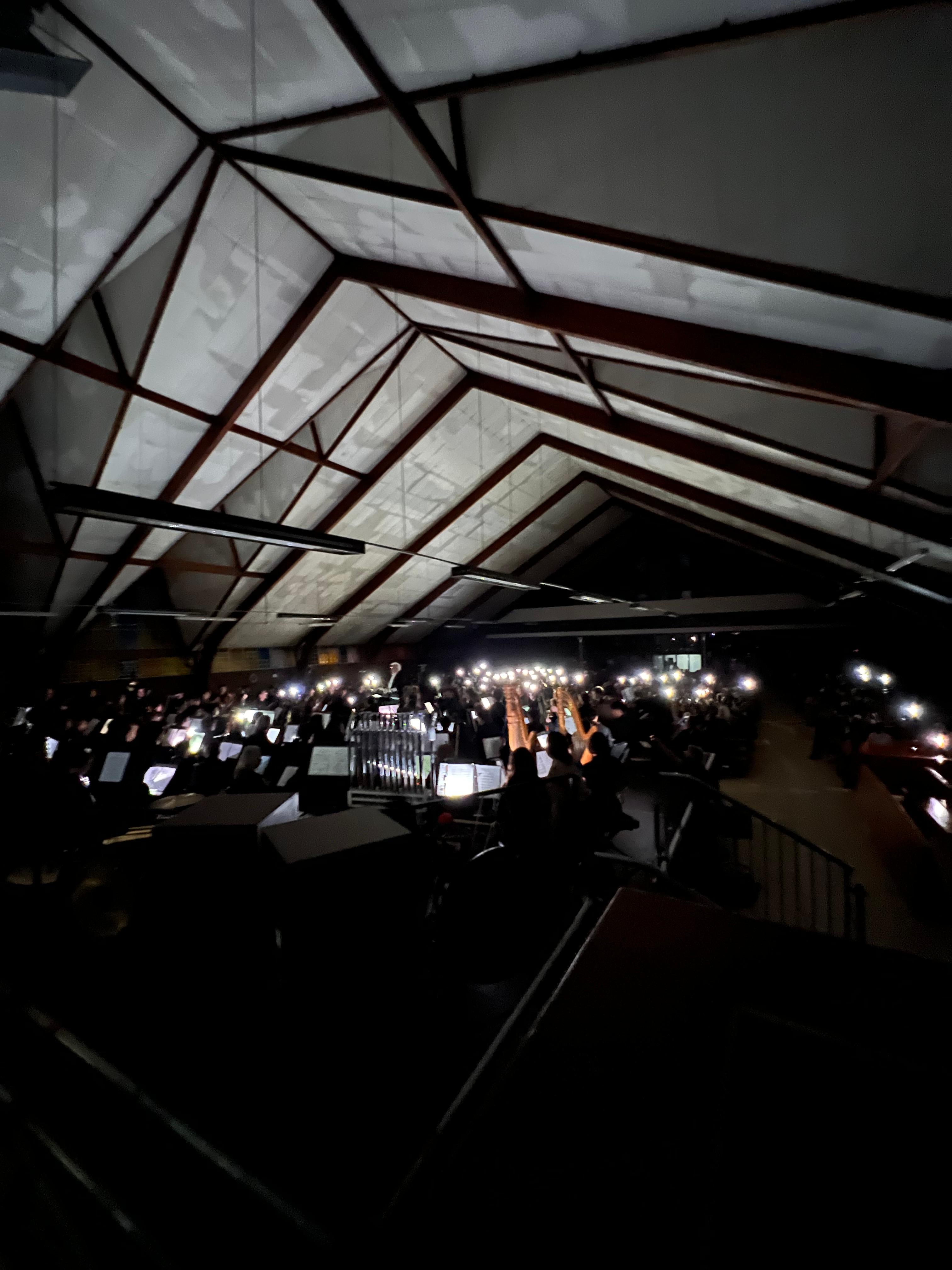
Mahler in Soweto, with concert lighters.
The symbolism, too, of players and audience coming together in this church – don’t be fooled into thinking that audiences are passive and don’t count in live performance: their intensity level ratcheted up several degrees when the lights cut out on Saturday – made the experience all the more moving and memorable.
Yes, the culminating moments tapped into the purely emotional sphere. No, the concert didn’t solve Soweto’s very real problems. But, for a few minutes, it truly pointed to something far beyond the here and now. Despite all the moment’s obvious imperfections – because of them, in fact – we glimpsed a flash of transcendence.
That realization registered with the whole throng in Regina Mundi. And perhaps it’s the best we can offer each other through music: the ability to see, even in the twinkling of an eye, the bigger picture that allows us to move on in fresh, new ways.
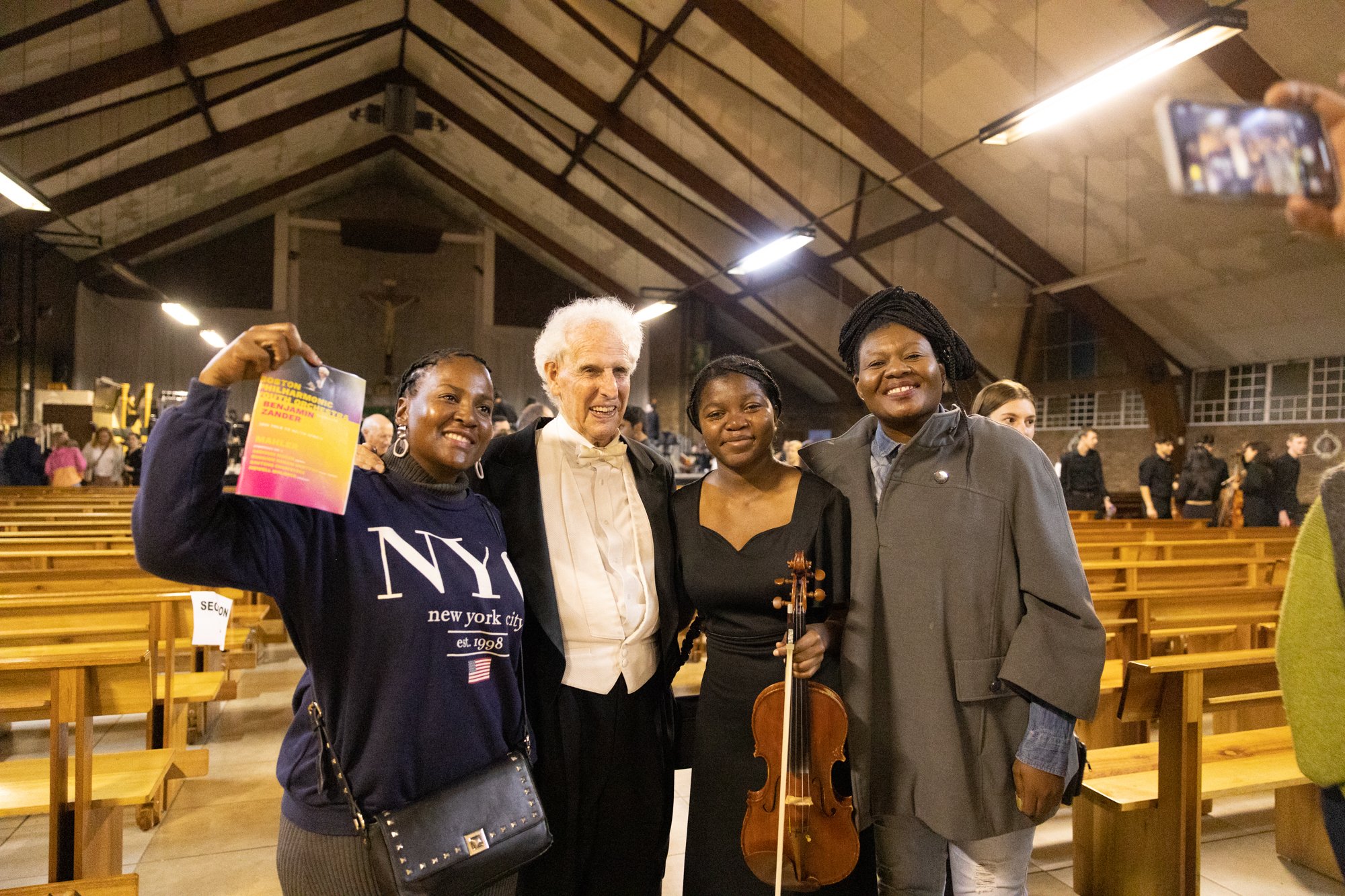 Benjamin Zander with members of the audience after Saturday’s concert.
Benjamin Zander with members of the audience after Saturday’s concert.
At the end, the place erupted in cheers and applause. This ovation, which went on for several minutes, was deafening and punctuated by splendidly invigorating, high-pitched ululations unique to these parts. Symphony Hall would be much enhanced by such expressivity.
Amid it, I caught an aside from Johan van Zyl, our tour director, to Sarita Uranovsky, one of the chaperones (and a native of Cape Town): “Doesn’t this make you proud to be from South Africa?” he asked. I’d like to think that, regardless of where we happen to call home, for that instant we were all proud South Africans.
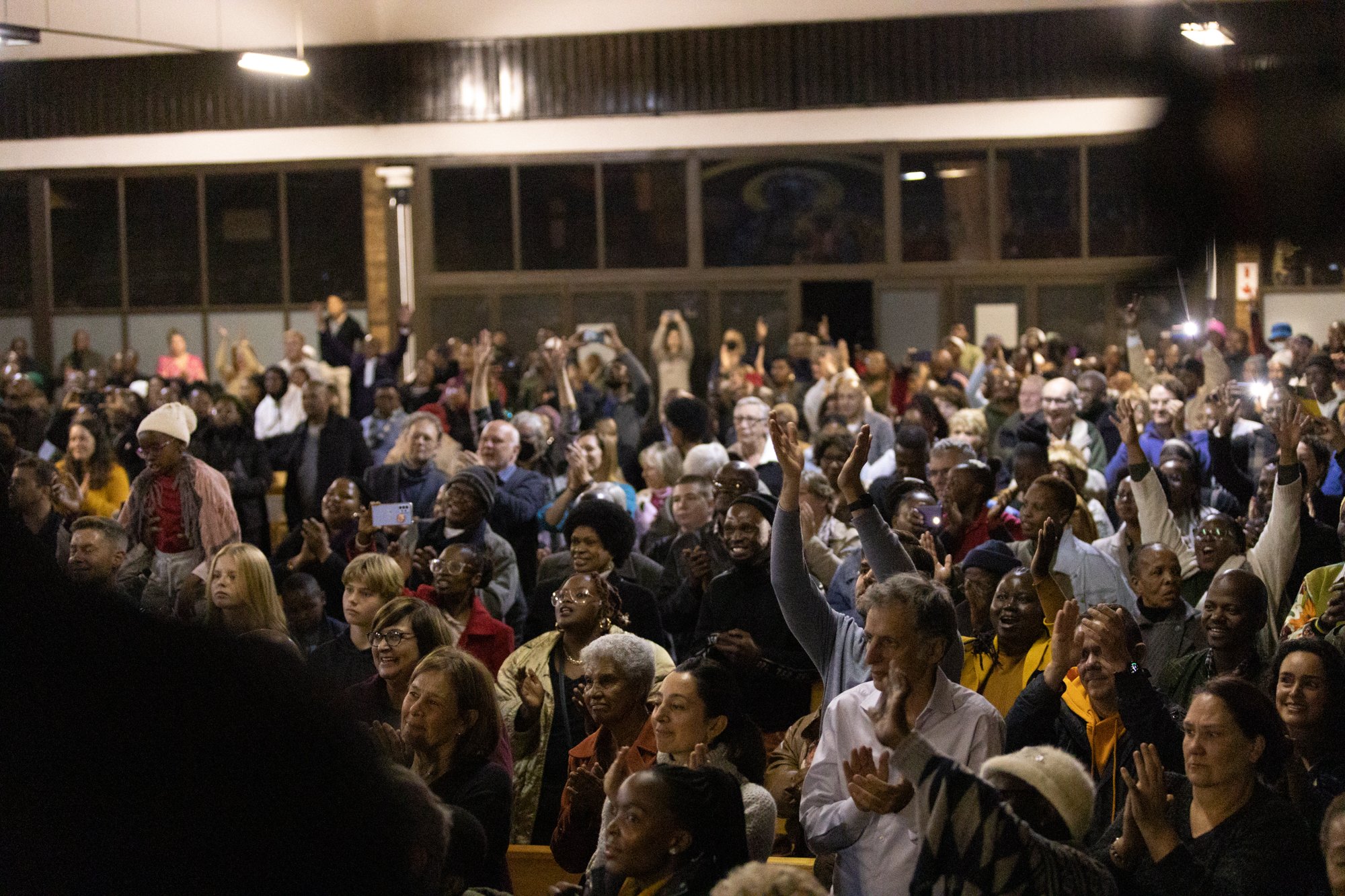 The audience at Regina Mundi after the BPYO’s performance of Mahler’s Symphony No. 2.
The audience at Regina Mundi after the BPYO’s performance of Mahler’s Symphony No. 2.
Photo credits: Jonathan Blumhofer and Paul Mardy.
